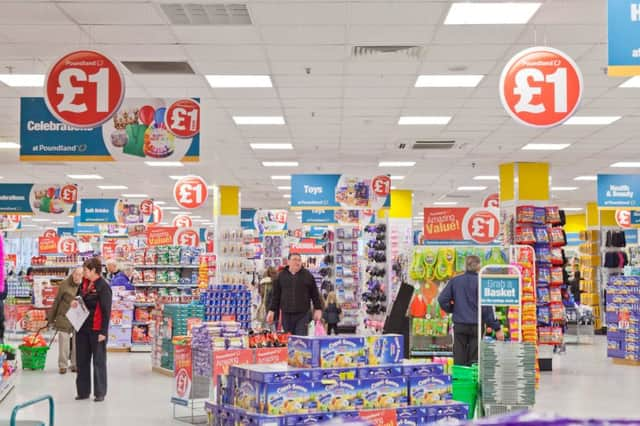How middle classes are flocking to pound stores


The study found that 57 per cent of adults in the UK claim to use a discount store every week, with 53 per cent of those people ranking in the top A/B social class.
The proportion of high earners visiting branches of low-cost chains such as 99p Stores, B&M Bargains and Wilkinsons was a huge increase on last year’s level of just 37 per cent.
Advertisement
Hide AdAdvertisement
Hide AdThe news comes on the back of the massive rise in popularity of Aldi and Lidl, which are attracting increasing numbers of middle-class shoppers looking for a bargain.
Last week, Aldi’s growing share of the grocery market saw it overtake Waitrose to become Britain’s sixth biggest super-market.
B&M Bargains grew its sales by 66 per cent to £1.3 billion last year and Poundland’s sales grew 13 per cent to £998 million in the same period.
Katie Littler, communications director of consultancy Him!, which carried out the research, said: “There has been a considerable shift in higher-income households using variety discounters, just as we have seen them using Aldi and Lidl regularly.
“Any stigma is slowly disappearing and they are becoming just another retailer, albeit trusted for a more limited range of missions and categories.”
The report said people who most use variety discounters also tend to be young. Nearly a third are under 34, while two in three of 18 to 24-year-olds say they have visited a variety discounter.
Poundland has been especially successful in attracting young shoppers with 31 per cent visiting a branch in the past week, up from 26 per cent a year ago. Men are also increasingly visiting cheap chain stores – 44 per cent of males said they had visited a Poundland branch in the previous week, up from 37 per cent a year ago.
Experts say the variety discounters have successfully taken over the gap left on high streets by Woolworths, which sold a range of general merchandise from pick and mix sweets to hardware and CDs.
Advertisement
Hide AdAdvertisement
Hide AdSome 57 per cent of shoppers who visit discount stores say they do so to buy confectionary, 54 per cent go for food, 48 per cent for health and beauty products and 40 per cent for household items.
Ms Littler said: “The food and drink items bought are much less about fresh and chilled, which have become the big footfall drivers for Aldi and Lidl.”
Perhaps unsurprisingly, the report found that average “basket spend” at variety discounters was just £8.93, the lowest for any grocery retailer and behind £11.81 in a convenience store and £31.30 in a supermarket.
Leigh Sparks, professor of retail studies at Stirling University, said: “There is definitely a trend for more affluent people to use cut-price businesses across the board. The simple reason is that everyone loves a bargain. Also, these chains have got so much bigger that they are in many more and different types of places, and a lot more people have access to them.”
He said that Poundland in particular had moved in to premises formerly occupied by Woolworths, which had locations in prime spots on Britain’s high streets.